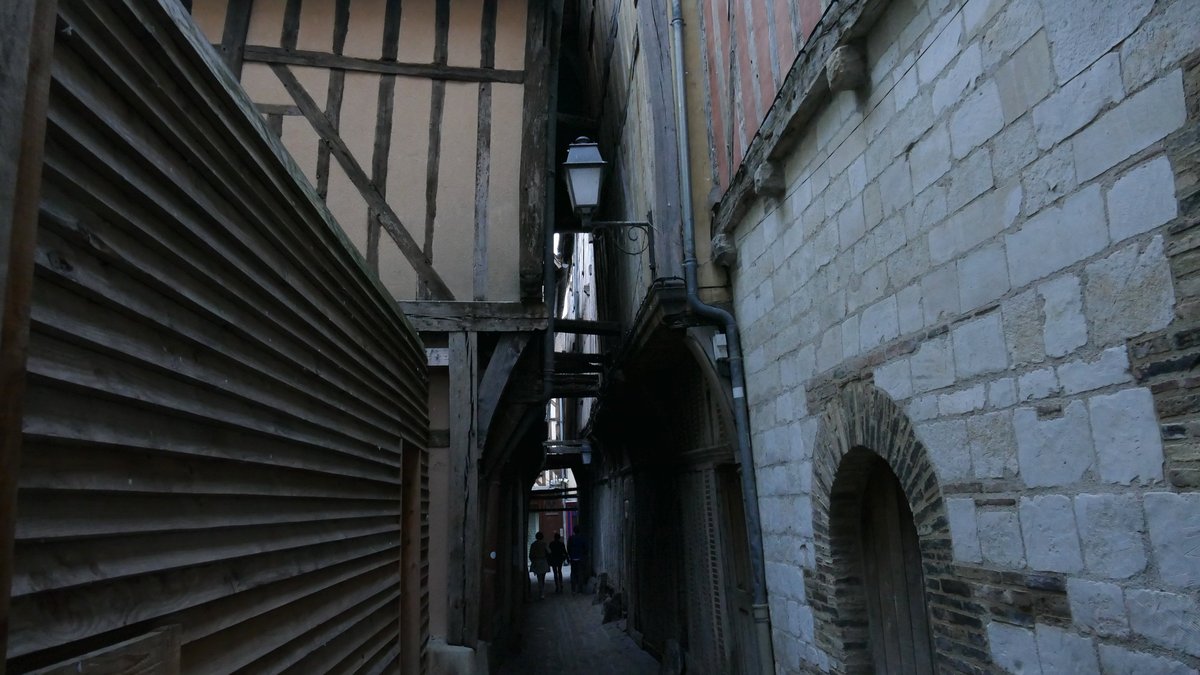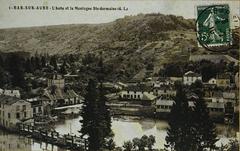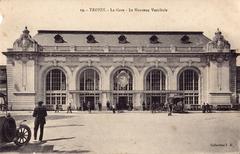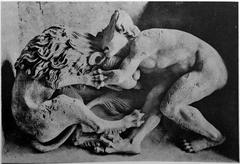
Visiting Hours, Tickets, and Historical Sites of Ruelle des Chats, Troyes, France
Date: 01/08/2024
Introduction
Nestled in the heart of the historic Bouchon de Champagne district in Troyes, France, Ruelle des Chats—known as the ‘Alley of Cats’—is an enchanting narrow street that offers visitors a unique glimpse into medieval architecture and history. This picturesque alleyway, dating back to the 15th century, has been meticulously preserved and restored to maintain its historical charm. The street’s name is derived from a local legend that cats could jump from one roof or attic to another due to the close proximity of the houses (Jardin de la Cathedrale).
Ruelle des Chats is a testament to the medieval urban planning and the timber-framed houses that characterize Troyes. This guide aims to provide a comprehensive overview of Ruelle des Chats, including its historical background, visitor information, special events, and tips for making the most out of your visit. Whether you’re a history enthusiast, a photography lover, or simply looking to explore the charming streets of Troyes, Ruelle des Chats is a must-visit destination.
Table of Contents
- Introduction
- Historical Background
- Visitor Information
- Special Events and Guided Tours
- Photographic Spots
- FAQ Section
- Conclusion
Historical Background
Origins and Medieval Significance
Ruelle des Chats stretches from Rue Champeaux to Rue Charbonnet and is renowned for its medieval charm and unique architectural features. The name ‘Ruelle des Chats’ is derived from the legend that cats could jump from one roof or attic to another due to the close proximity of the houses (Jardin de la Cathedrale).
The street’s origins date back to the 15th century when it was initially known as Rue Maillard. Over time, the inhabitants began referring to it as ‘Ruelle des Chats,’ a name that eventually became official. Its medieval character is accentuated by its narrowness, cobblestone pavement, and half-timbered houses that lean towards each other, creating a sense of intimacy and historical continuity (Aube Champagne).
Reconstruction After the Great Fire of 1524
The Ruelle des Chats, like much of Troyes, underwent significant reconstruction following the Great Fire of 1524. This devastating event led to the destruction of many buildings in the city, necessitating extensive rebuilding efforts. The alleyway was reconstructed in a manner that preserved its medieval essence, with timber-framed houses and cobblestone streets that evoke the architectural style of the period (Wikipedia).
The reconstruction efforts were not merely about restoring the physical structures but also about preserving the historical and cultural identity of the area. The timber-framed houses, with their overhanging upper floors, are a testament to the craftsmanship of the time. These architectural features were designed to protect the lower levels from rainwater runoff, which was a common cause of wood and plaster deterioration (Aube Champagne).
Architectural Features and Restoration
The architectural features of Ruelle des Chats are a significant part of its historical allure. The houses are constructed with timber frames and overhanging upper floors, known as ‘encorbellements.’ These overhangs not only add to the aesthetic appeal but also serve a practical purpose by protecting the lower levels from rainwater. The central gutter, a common feature in medieval streets, runs along the middle of the alleyway, allowing water to drain away and keeping the cobblestone pavement relatively dry (Jardin de la Cathedrale).
In 1981, the entire area underwent a significant restoration by the Compagnons du Devoir, a French organization dedicated to preserving traditional craftsmanship. This restoration project aimed to maintain the historical integrity of the alleyway while ensuring its structural stability. The ends of the beams were intricately carved with figures, often inspired by warfare, adding to the historical narrative of the area (Aube Champagne).
Modern Additions and Preservation Efforts
In 2014, Ruelle des Chats saw the addition of three new timber-framed houses, meticulously recreated from old postcards and period engravings. This project was a testament to the ongoing efforts to preserve and celebrate the historical heritage of Troyes. The new houses were built to blend seamlessly with the existing medieval architecture, ensuring that the alleyway retained its historical charm while accommodating modern needs (Aube Champagne).
The preservation efforts extend beyond the physical structures to include the historical ambiance of the alleyway. Antique lighting, reminiscent of the 16th century, has been installed to enhance the medieval atmosphere. The City Council of Troyes first decided to light the streets with tallow candles in lanterns during the Champagne fairs in 1534. Over the centuries, the lighting evolved from tallow to oil in 1800, gas in 1842, and finally to electricity in the early 20th century (Aube Champagne).
Visitor Information
Ticket Prices
Visiting Ruelle des Chats is free of charge. However, certain guided tours or special events may require a ticket.
Opening Hours
Ruelle des Chats is open to the public 24/7. It is advisable to visit during daylight hours to fully appreciate its architectural features.
Travel Tips
- Best Time to Visit: Spring and early autumn offer the best weather conditions for a visit.
- How to Get There: Troyes is accessible via train from Paris, and the alleyway is a short walk from the city center.
- What to Wear: Comfortable walking shoes are recommended due to the cobblestone pavement.
Nearby Attractions
- Troyes Cathedral: A stunning example of Gothic architecture located nearby.
- Musee d’Art Moderne: An art museum showcasing modern and contemporary works, just a short walk away.
- Maison de l’Outil et de la Pensee Ouvriere: A museum dedicated to tools and craftsmanship.
Accessibility
Due to its narrow and cobblestone nature, Ruelle des Chats may not be easily accessible for people with mobility issues. However, nearby streets and attractions are more accommodating.
Special Events and Guided Tours
Unique Events
Throughout the year, Ruelle des Chats hosts various cultural events, including medieval fairs and historical reenactments that bring the alleyway’s history to life.
Guided Tour Options
Several local tour companies offer guided tours of Ruelle des Chats, providing in-depth historical context and fascinating anecdotes about the alleyway and its significance.
Photographic Spots
Best Places for Photos
- Timber-Framed Houses: Capture the intricate designs and overhanging floors of the medieval houses.
- Cobblestone Streets: The narrow, winding alleyway itself makes for a perfect backdrop.
- Carved Beams: Don’t miss the intricately carved beam ends, which add a unique touch to your photos.
FAQ Section
Commonly Asked Questions
- When is the best time to visit Ruelle des Chats? Spring and early autumn offer the best weather conditions.
- Are there guided tours available? Yes, several local tour companies offer guided tours.
- Is Ruelle des Chats accessible for people with disabilities? Due to its narrow and cobblestone nature, it may not be easily accessible for people with mobility issues.
Conclusion
Ruelle des Chats is a remarkable example of how historical preservation and modern restoration can coexist to create a living museum of medieval architecture and culture. The alleyway’s narrow streets, timber-framed houses, and cobblestone pavement offer a unique and enchanting experience for visitors, allowing them to step back in time and explore the rich history of Troyes. Plan your visit today and immerse yourself in the medieval charm of this historic alleyway.
For more updates and travel tips, follow our blog or download the mobile app Audiala.
References
- Jardin de la Cathedrale, 2019, La ruelle des Chats, Troyes
- Aube Champagne, n.d., Ruelle des Chats et Cour du Mortier d’Or
- Wikipedia, n.d., Ruelle des Chats
- Lonely Planet, n.d., First-time guide to Troyes, France
- A Hedgehog in the Kitchen, n.d., Things to do in Troyes, France




